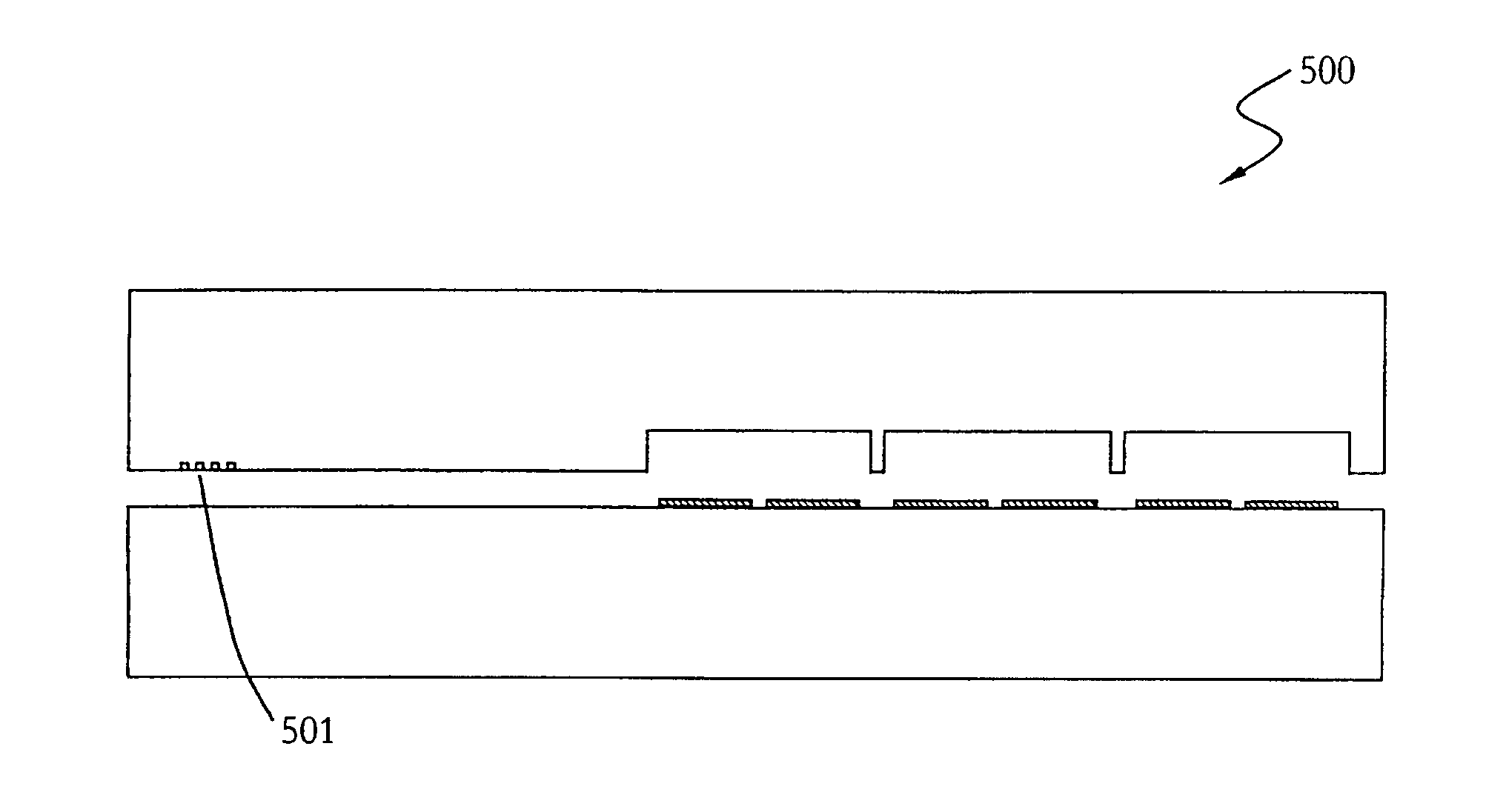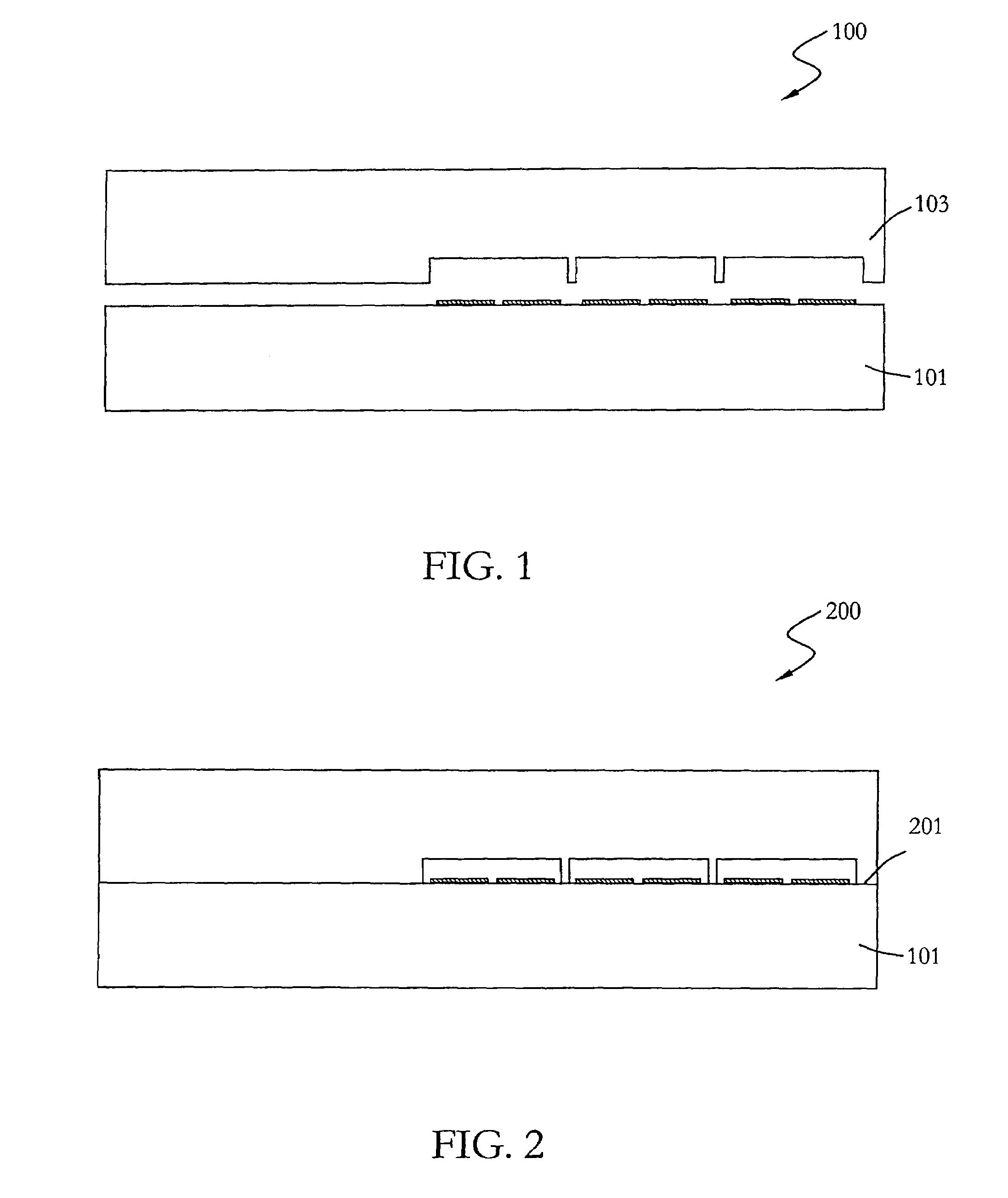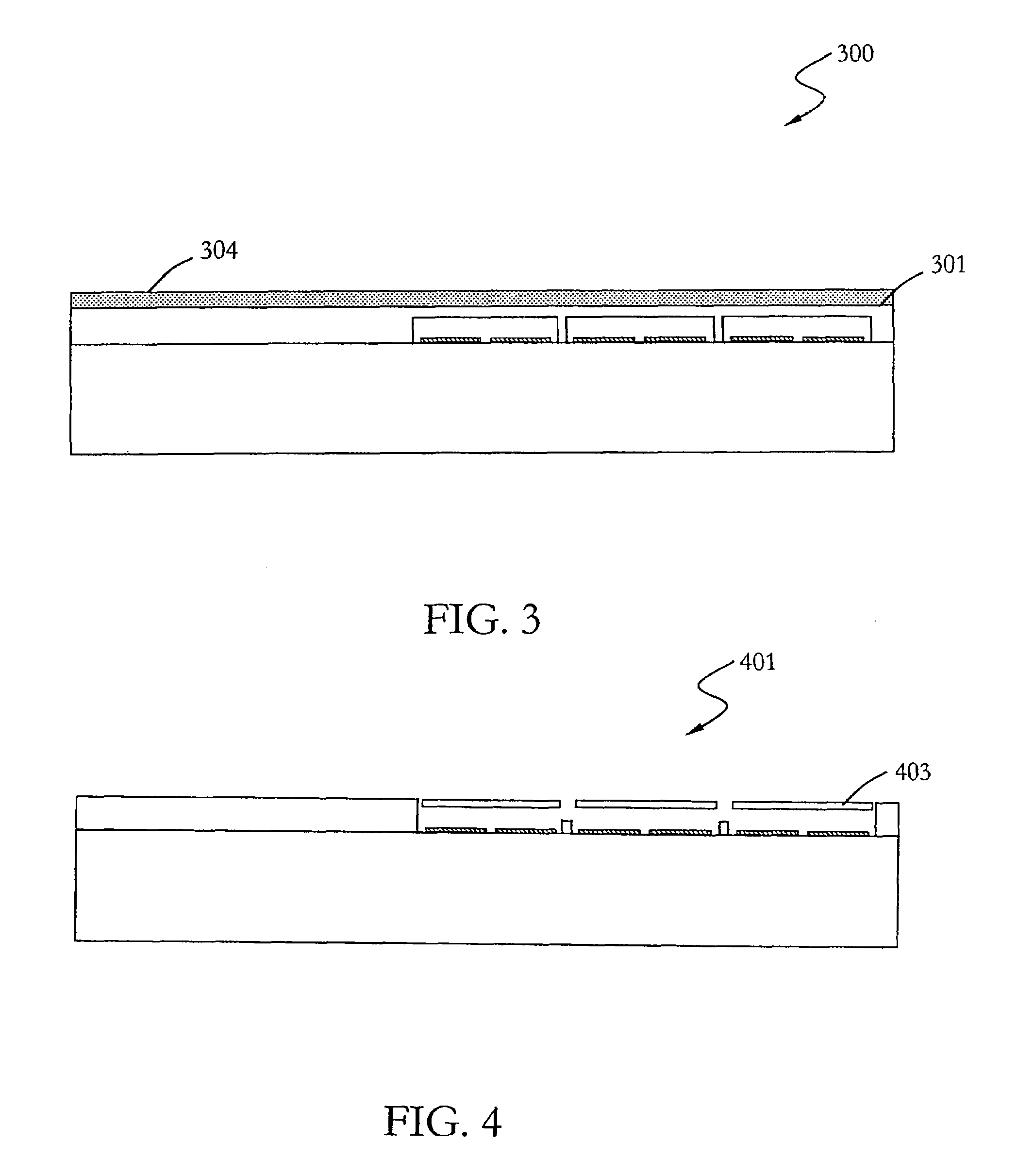Method and structure for fabricating mechanical mirror structures using backside alignment techniques
a mechanical mirror and alignment technique technology, applied in the field of backside alignment techniques, can solve the problems of difficult to make larger, low yield of liquid crystal panels, and large volume of crts, and achieve the effects of improving integrated structure, high device yield, and convenient us
- Summary
- Abstract
- Description
- Claims
- Application Information
AI Technical Summary
Benefits of technology
Problems solved by technology
Method used
Image
Examples
Embodiment Construction
[0014]According to the present invention, techniques for bonding substrates are provided. More particularly, the invention includes a method and structure for bonding substrates together using alignment marks. Merely by way of example, the invention has been applied to integrating a mechanical based structure with an integrated circuit chip. But it would be recognized that the invention has a much broader range of applicability.
[0015]In a specific embodiment, a method for fabricating mechanical structures from bonding substrates can be summarized as follows.
[0016]1. Provide a first substrate having a first thickness of silicon material and a first face.
[0017]2. Provide a second substrate having a second thickness and a second face.
[0018]3. Bond the first face of the first substrate with the second face of the second substrate.
[0019]4. Expose an alignment mark comprising a front-size zero mark within a portion of either the first thickness or the second thickness.
[0020]5. Apply a lay...
PUM
| Property | Measurement | Unit |
|---|---|---|
| thickness | aaaaa | aaaaa |
| thickness | aaaaa | aaaaa |
| depth | aaaaa | aaaaa |
Abstract
Description
Claims
Application Information
 Login to View More
Login to View More - R&D
- Intellectual Property
- Life Sciences
- Materials
- Tech Scout
- Unparalleled Data Quality
- Higher Quality Content
- 60% Fewer Hallucinations
Browse by: Latest US Patents, China's latest patents, Technical Efficacy Thesaurus, Application Domain, Technology Topic, Popular Technical Reports.
© 2025 PatSnap. All rights reserved.Legal|Privacy policy|Modern Slavery Act Transparency Statement|Sitemap|About US| Contact US: help@patsnap.com



